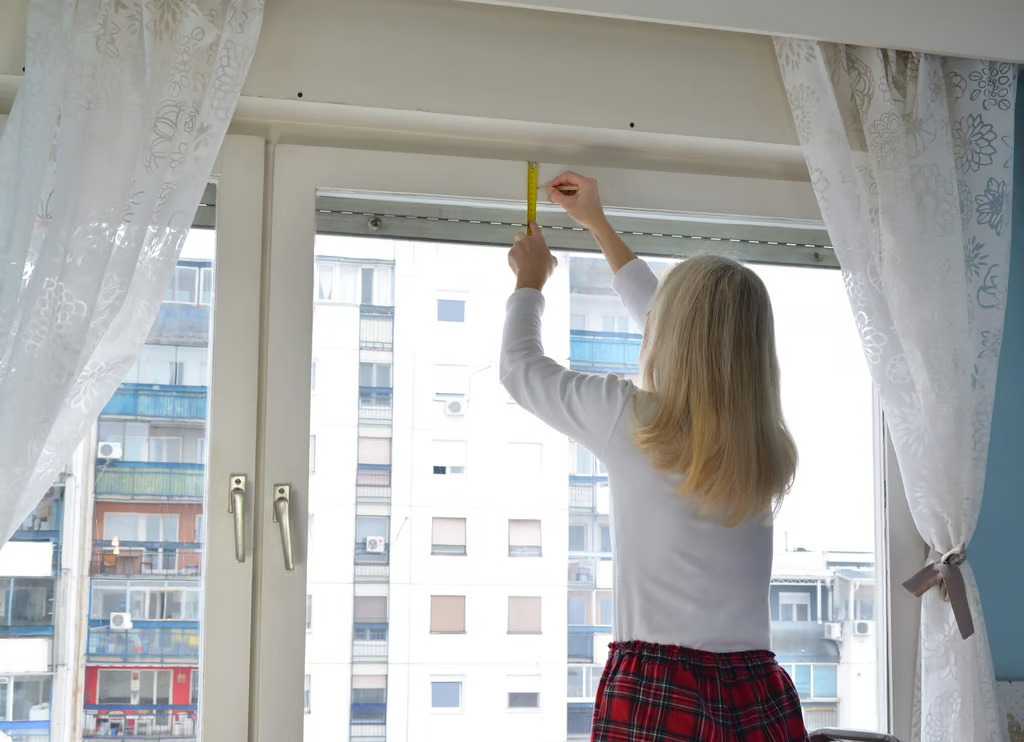The Ultimate Guide to Measuring for Curtains: A Step-by-Step Guide for Perfect Fit

Curtains are an essential part of any home, but they can be difficult to measure for. If you get the measurements wrong, your curtains will either be too short or too long, which can look untidy. In this blog post, we'll walk you through the process of measuring for curtains step-by-step and include some tips for getting the perfect fit.
How to Determine the Width of Your Window
Determining the width of your window for blackout curtains follows a similar process to measuring for regular curtains. Here's a step-by-step guide specifically for blackout curtains:
- Prepare the necessary tools: You'll need a measuring tape, a pen or pencil, and a notepad to record your measurements.
- Measure the inside width: Start by measuring the width of the inside window frame or the area where you want to hang the blackout curtains. Measure from the left inside edge to the right inside edge of the frame. Note down this measurement.
- Consider the desired coverage: Blackout curtains are designed to block out light and provide privacy. To achieve optimal light-blocking, it's recommended to have the curtains overlap the window frame on both sides. A general rule of thumb is to add about 4 to 8 inches (10 to 20 cm) to the width measurement you took in step 2. This additional width accounts for the curtain's ability to cover the window frame and block out light effectively.
- Round up or down: Depending on your personal preference, you can round the measurement up or down to the nearest whole number. Rounding up ensures that the blackout curtains fully cover the window and minimise light leakage.
- Double-check your measurements: Before finalising your measurements, double- check to ensure accuracy. Measure again if needed to avoid any errors.
When purchasing blackout curtains, you can often find them in standard sizes. In that case, choose the closest size that matches your measurements or opt for a slightly wider curtain for better coverage.
Keep in mind that the above steps provide a general guideline, and it's always advisable to follow any specific instructions or recommendations provided by the manufacturer or retailer of the blackout curtains you are purchasing.
Measuring the Height of Your Window for Curtains
To ensure you measure the height of your window accurately for blackout curtains, follow these step-by-step instructions:
- Prepare the essential tools: Prior to starting the measurement process, gather the required items, including a measuring tape, pen or pencil, and a notepad for documenting your measurements.
- Determine the height of the window's interior: Begin by measuring the vertical distance of the inside window frame or the specific location where you intend to install the blackout curtains. Position the measuring tape at the upper inside edge of the frame and extend it downwards until reaching the lower inside edge. Record this measurement, preferably using inches or centimetres as units of measurement.
- Determine the desired coverage: Decide the desired height for the blackout curtains to achieve optimal light-blocking and privacy. Typically, it is recommended for the curtains to extend below the window frame, reaching the floor or windowsill. Measure from the top inside edge of the window frame to your preferred length, whether it is the floor, windowsill, or any other specific point.
- Round the measurement: Depending on your personal preference and desired visual outcome, you have the option to round the measurement up or down to the nearest whole number. Rounding up will ensure that the curtains completely cover the window's height and extend to the floor, while rounding down will create a slightly shorter and more customised appearance.
Selecting the Ideal Curtain Rods
When selecting the ideal curtain rods for your curtains, consider the following tips:
- Length and adjustability: Choose curtain rods that are long enough to span the width of your window, allowing your curtains to fully cover the window when closed. opt for adjustable rods that can be extended or shortened to fit your specific window size.
- Weight-bearing capacity: Consider the weight of your curtains when selecting curtain rods. Heavier curtains may require sturdier rods with higher weight-bearing capacity. Ensure that the rods you choose can support the weight of your curtains without sagging or bending.
- Style and design: Curtain rods come in a variety of styles and finishes to complement your decor. Consider the overall aesthetic of your room and select curtain rods that match or enhance the style. From traditional to modern, there are plenty of options available.
- Installation method: Different curtain rods require different installation methods. Some rods require brackets or hardware to be mounted on the wall, while others may use tension or magnetic installation. Choose a rod that aligns with your installation preferences and capabilities.
- Finials and accessories: Finials are decorative end caps that attach to the ends of curtain rods. They come in various shapes and designs, adding a finishing touch to your curtains. Consider the style and material of the finials, as well as any additional accessories such as rings or clips that may be needed to hang your curtains.
- Consider the curtain type: Different curtain styles may require specific types of rods. For example, if you have pinch-pleated curtains, you may need a rod with rings or hooks to hang them properly. Check the requirements of your curtain style and ensure that the rod you choose is compatible.
- Budget: Set a budget for your curtain rods and stick to it. Determine the price range that fits your needs and explore options within that range. There are curtain rods available at various price points, so you can find one that suits your budget without compromising on quality.
Remember to measure your window accurately before purchasing curtain rods to ensure a proper fit. Taking these tips into account will help you select the ideal curtain rods that not only support your curtains but also enhance the overall appearance of your windows and room.
Final Words
By following the guidelines outlined in the guide, you can accurately determine the width and height of your window, consider the desired coverage and fullness of the curtains, and make informed decisions regarding rounding and additional factors such as curtain headers and hems. The guide emphasizes the importance of double-checking measurements and considering the specific requirements of your curtain style.






